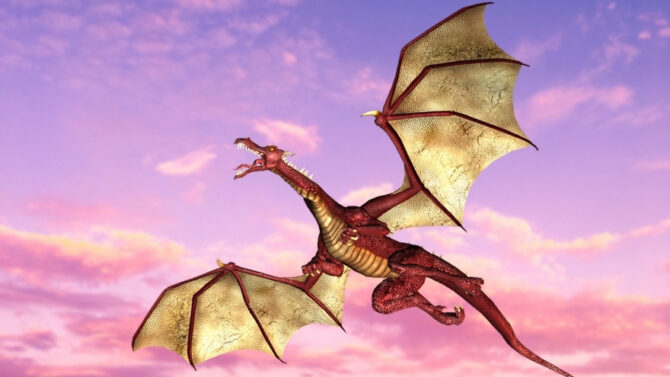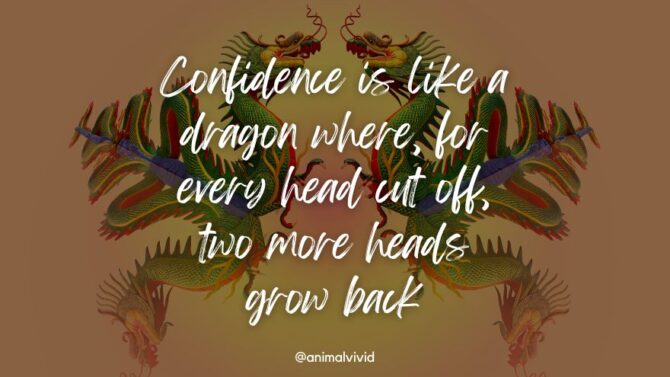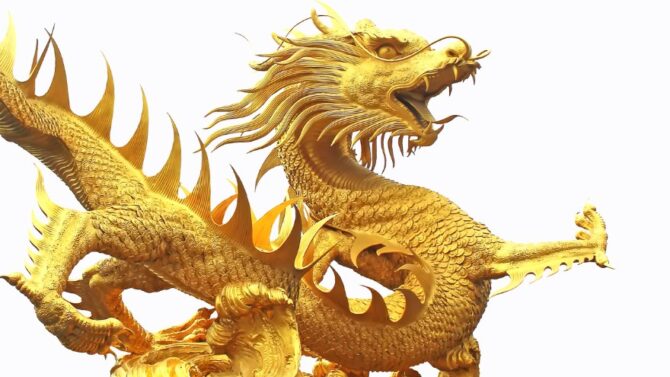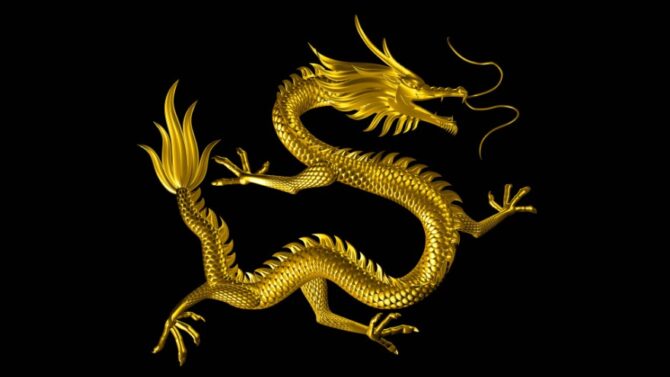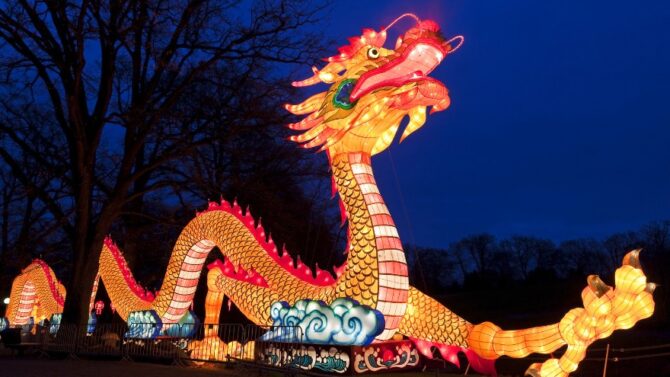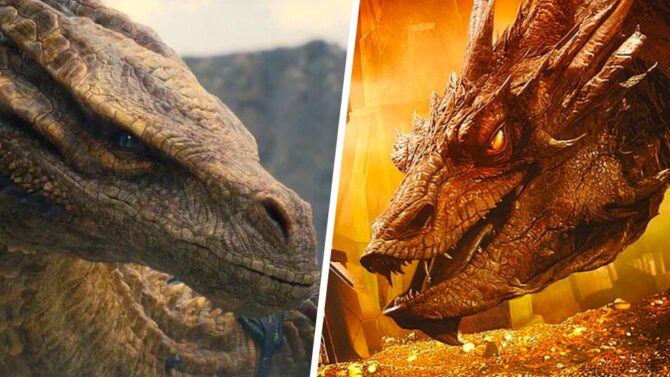Western dragons are notorious and not the kind of creatures you’d want to mess with.
Though in modern times, there has been some attempt to redeem the western dragon’s image, the stigma from past works still sticks.
Their villainous reputation doesn’t stop them from being wildly popular, however.
Few creatures in fantasy fiction have the fanbase that dragons do.
The history of western dragons goes as far back as the Greco-Roman world, with gods and legendary heroes vanquishing them as monsters.
They also have ties to Christianity, where they symbolize evil.
Let’s find out more.
History of Western Dragons
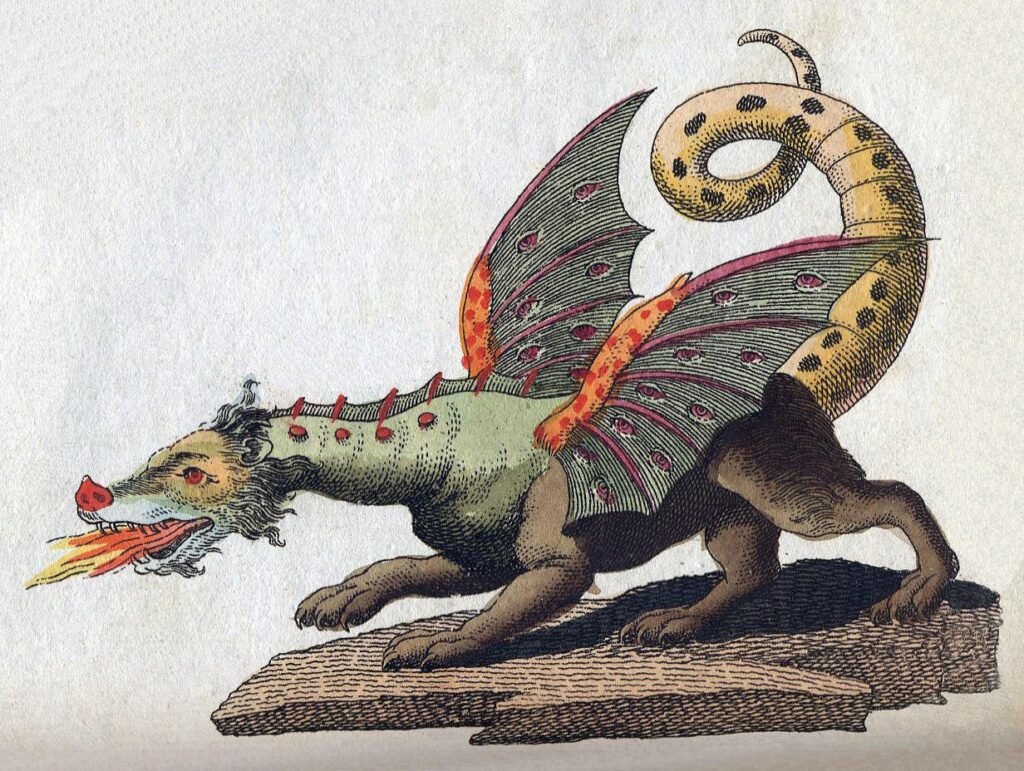
The word dragon comes from the Greek word drakon, which means serpent, but the English use stems from the French.
These creatures existed before the advent of Christianity and were featured in many ancient myths and legends.
The earliest mentions of dragons started in the Near East, but in the Western context, we can trace the history of dragons to Indo-European mythologies and Greco-Roman literature.
Indo-European mythologies first brought the concept of heroes fighting against dragons.
The initial heroes were thunder gods, though, not humans.
The dragons looked monstrous and comes with two or more heads. They also live close to water.
In Ancient Greek, dragons were first mentioned in Homer’s Iliad.
Another work that features dragons is Theogony, a poem written in the seventh century BC by Hesiod.
The hero here was Zeus, going at loggerheads with a scary dragon named Typhon. Zeus vanquishes Typhon and pushes him to Tartarus.
Other iconic battles include that of Apollo and python, Heracles and the Lernean Hydra, Jason and the dragon guarding the golden fleece, etc.
Roman mythology is similar to that of the Greek, with little differences in names and locations.
Then we have the Christian Bible, especially the book of Revelation.
Written in the apocalyptic genre, it contains portrayals of the dragon as a symbol of the devil.
Depictions of the western dragon in the Middle Ages draw from these ancient portrayals.
In early centuries like the 11th and 13th, many were interested in dragons.
This led to more tales featuring the flying character, as well as paintings like MS Harley 3244.
These dragons were mainly villainous and often found in caves protecting the treasure.
Some famous legends that featured dragons include that of Saint George and Saint Margaret of Antioch.1 2
Both characters faced dragons, albeit in different circumstances.
Saint George opposed a tyrannical creature to save a village and their princess. Saint Margaret was a martyr who got attacked.
Modern literature mainly features a dragon in the fantasy genre. Popular dragon characters soon emerged.
An example is Lewis Carroll’s Jabberwock and Smaug from The Hobbit.
Modern literature kept the villainous image of dragons, but others changed the narrative.3
Many children’s books had helpful dragons, and works like the Dragonriders of Pern went in a different direction. There’s Eragon too, where the dragon was an ally.
Significance of Western Dragons
The history of western dragons proves how important they have been to western literature and religious symbolism.
Here is a detailed list of the significance of dragons in the west:
1. The fight between good and evil
Western dragons represented evil in many tales, and their defeat by the protagonist remains a picture of the human’s hope that good will eventually triumph over evil. The heroes stood for good.
2. Obstacles in an adventure
This applies more to stories where the hero embarks on an adventure, either to rescue a princess or get treasure.
The path to his goal is often replete with challenges, the ultimate being a fire-breathing dragon.
Adventures of this kind are also a depiction of growth for the hero as the experience gained changes his character and perspective.
3. Test for masculinity
Closely related to the aforementioned point, heroes in many stories are tasked with taking down a dragon as a masculinity test.
Sometimes it is a rite of passage from boyhood to manhood.
Other times, the hero may need to prove himself worthy of marrying a princess or ascending a throne.
4. Guidance
Though this role is more common in Chinese mythology, some dragons are portrayed in a positive light.
Many children’s stories have these creatures wisely guiding the characters.
5. A valuable character
Despite the prevalent negative symbol, dragons are considered valuable in many stories.
In many cases, their battle with the hero formed the climax of the story.
The nuances brought about by modern movies like How to Train your Dragon made these creatures more captivating.
Western Dragons vs. Chinese Dragons
Western culture differs from that of the Chinese, and that reflects in the portrayal of their dragons.
Both places hold a high view of dragons but in significantly different ways.
The Chinese dragons symbolize prosperity, fortune, power, and wisdom.
They also had magical properties and could control the weather.
While there are villainous dragons (and hot-tempered ones), the overall perception was that dragons were noble beings.
Of course, this isn’t the case for the villainous western dragon.
With some exceptions, dragons in western mythology symbolize evil, death, and destruction.
They also differed in looks. Chinese dragons were like large serpents in different colors. Not all had wings or could breathe fire.
Western dragons looked more imposing and dinosaur-like, with wings and the ability to raze a village with fire. Some had multiple heads.
Many Chinese dragons were considered water spirits, and they were elusive. Western dragons lived in caves and mountains.
Other Western Dragon Facts
- Before dragons became legendary creatures, the word drakon might have meant large snakes.
- In any case, dragons, as they appear in myths, do not exist.
- Though the standard dragon is huge and menacing, they come in different sizes.
Final Thoughts
As long as the fantasy genre exists, dragons won’t go out of existence in the realm of mythology and legends.
There would always be another creature gracing our screens or being described in books.
We might also be witnessing a shift in paradigm in future works as more dragons appear in a positive or nuanced light.
References & Notes
Facts Sources:
- Saint George and the Dragon. National Gallery of Art.
- Saint Margaret of Antioch. Britannica.
- Dragons Get a Modern Image Makeover. NPR.
